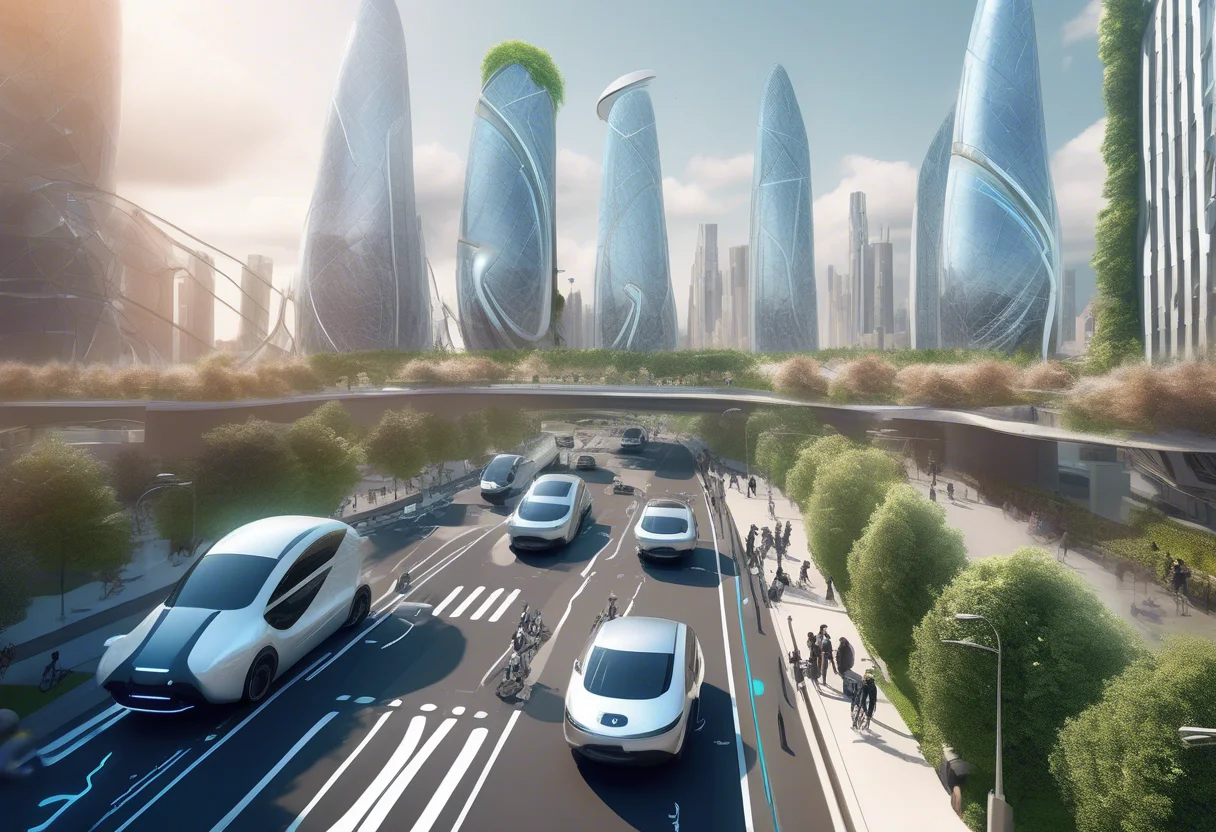
Urban mobility is at a turning point, with AI paving the way for a future where traffic jams and clunky public transit might just be things of the past. By 2050, about 70% of people worldwide will live in cities. That's a big number, showing why we need smarter, more sustainable ways to get around. This piece looks at how AI is changing urban mobility. From improving traffic flow and updating public transit to encouraging sustainable city growth, AI is key to a new era of city life. We'll talk about the problems cities face now, the cool AI solutions being rolled out, and what the future might look like for getting around in cities. Let's take a look at the bustling streets of the future, where AI is leading the way!
Summary: This article discusses the challenges of urban mobility and the transformative role of AI technologies in traffic management, public transit, and sustainable urban development. It also explores future trends and emerging AI technologies in urban mobility.
Urban Mobility Challenges and the Role of AI Technologies
Traffic Congestion and Pollution Solutions with AI Technologies
Cities are becoming increasingly crowded, leading to more traffic jams and pollution. By 2050, approximately 68% of the global population will reside in urban areas. This demographic shift places immense pressure on roadways and public transportation systems, necessitating smart solutions.
AI's Role in Traffic Management
Artificial Intelligence, leveraging real-time data and 5G technology, is pivotal in managing traffic more efficiently. AI optimizes traffic flow by adjusting traffic signals and predicting potential congestion points.
Growth of AI-Enhanced Car-Sharing Services
AI-enhanced car-sharing services, integrated with public transportation, are projected to expand significantly by 2030. This growth is anticipated to reduce traffic congestion and pollution in U.S. cities.
AI-Driven Smart Infrastructure
By 2025, over 500 cities are expected to implement AI-driven smart infrastructure and digital twins. These technologies facilitate resource optimization and pollution monitoring.
Case Study: AI-Powered Solutions in New York City
In 2025, New York City implemented AI-powered congestion pricing. Within two months, this initiative generated over $100 million for public transit and decreased vehicle entries into congested areas by 6 million.
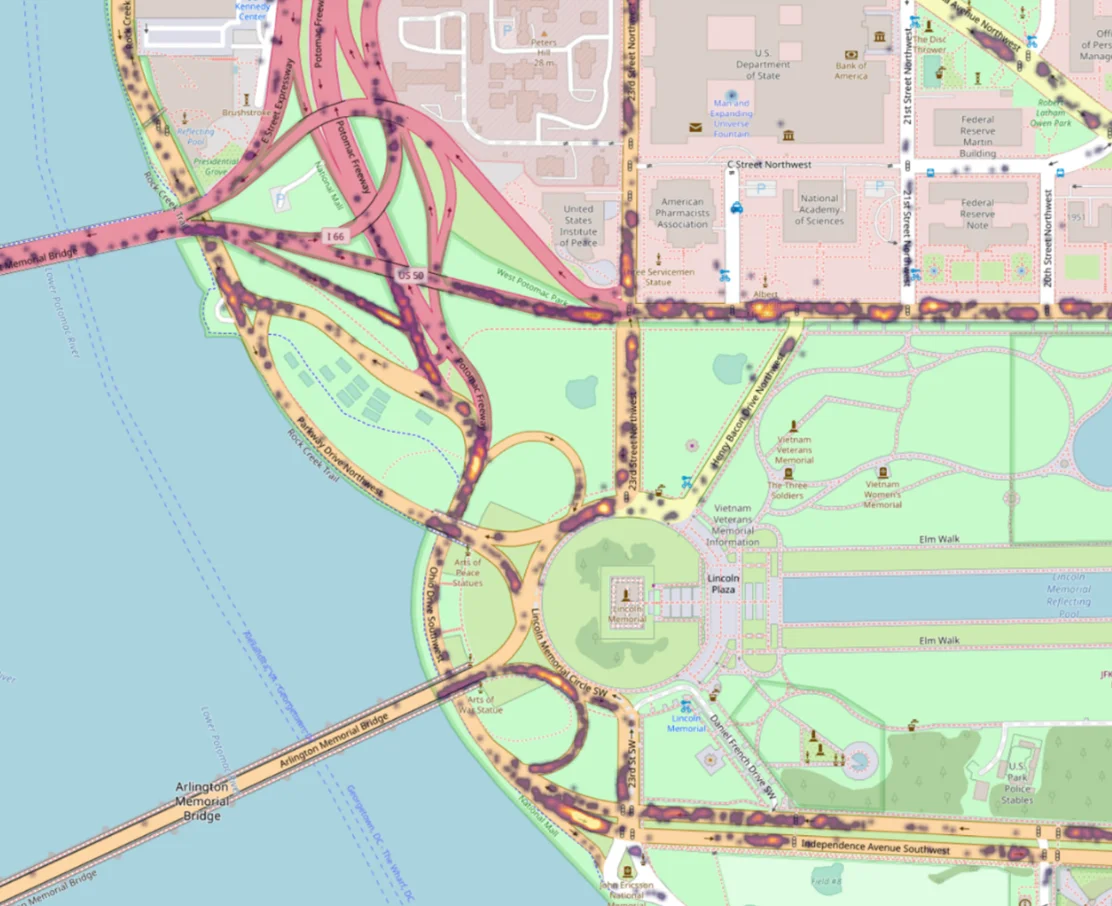
Enhancing Safety and Emergency Response with AI Technologies
AI is revolutionizing urban safety and emergency response strategies. Autonomous vehicles, guided by AI, aim to enhance road safety by minimizing human errors. However, regulatory and political factors in the U.S. may delay the widespread adoption of these vehicles.
Real-Time Incident Detection with AI
AI data platforms enable real-time incident detection, expediting emergency responses and improving traffic management. Collaborative efforts between public and private sectors are utilizing AI and big data to enhance mobility systems, thereby reducing accidents and improving response times.
AI's Impact on Safety and Traffic Flow
- In Southern Nevada, AI technology contributed to a 17% reduction in crashes at hazardous intersections.
- In Florida, AI-controlled traffic signals reduced travel times by 9.36% across eight routes.
Overall, AI's integration into urban mobility enhances safety by improving incident management, pedestrian detection, and traffic flow, ultimately facilitating smoother and more efficient transportation.
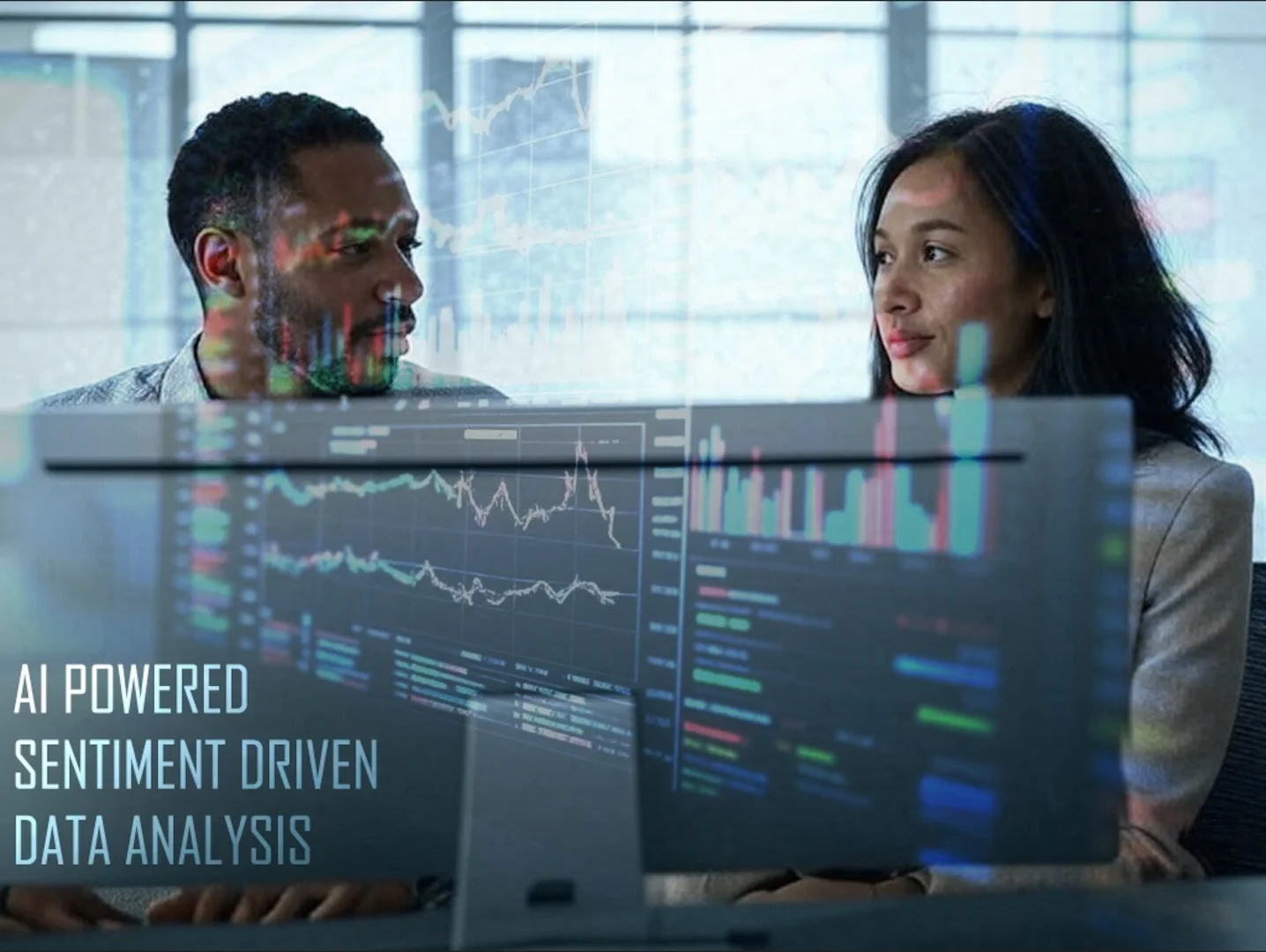
AI Technologies Transforming Traffic Management
AI Technologies in Traffic Signals
AI-powered traffic signals are transforming the way we manage city traffic. In North Carolina, a significant AI system has been implemented at 2,500 intersections. This system leverages GPS data from connected vehicles to adjust signal timings, enhancing traffic flow without the need for new infrastructure. This innovative approach allows for in-depth traffic data analysis, identifying delays, queues, and emissions from idling vehicles. The benefits include improved planning and cost savings.
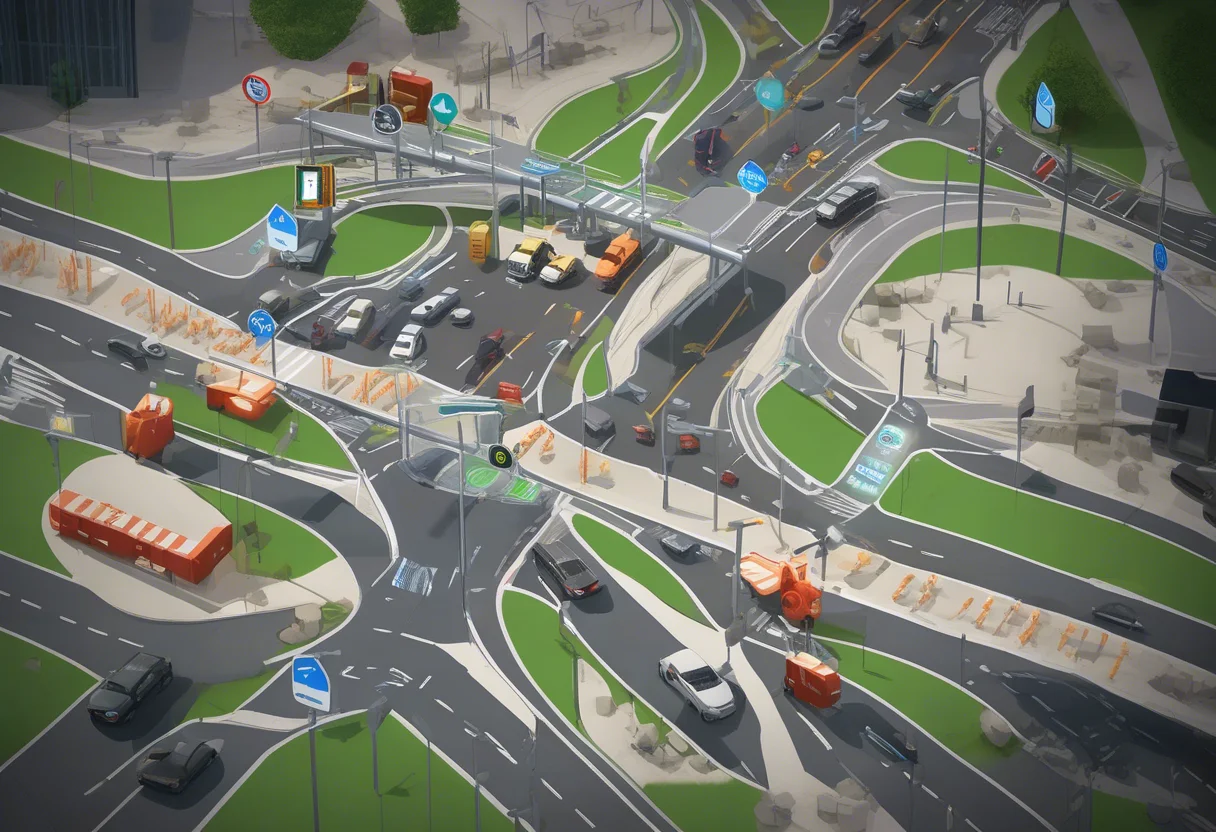
In California, cities such as Los Angeles and San Francisco are deploying AI and IoT to develop smart traffic networks. These networks aim to reduce congestion and enhance safety. Their Integrated Corridor Management projects use sensors and machine learning to monitor traffic incidents in real-time, facilitating smoother highway traffic. AI-powered systems also dynamically adjust traffic lights based on real-time vehicle speed, density, and violations, reducing wait times and clearing intersections efficiently.
Edge AI Technologies for Real-Time Traffic Detection
Edge AI sensing is revolutionizing traffic management by enabling real-time detection and response through local data processing. AI traffic analytics utilize both real-time and historical data to predict traffic congestion, allowing for proactive congestion management. AI tools within traffic networks can identify emergency vehicles and alter signals to clear their path, accelerating emergency response times.
Intelligent Traffic Systems (ITS) employ AI technologies, such as neural networks and support vector machines, to analyze complex data and predict traffic patterns under various conditions. Real-time AI monitoring can detect sudden traffic spikes, extend green lights when necessary, and provide recommendations to alleviate congestion.
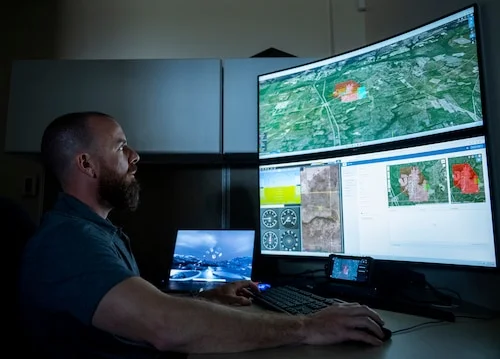
Federal initiatives, like the ITS program and SMART grants, are advocating for AI-powered smart roads and connected vehicles across the United States. By processing data at the edge, these systems minimize delays, allowing for rapid decision-making crucial in the dynamic environment of urban traffic. This integration of edge AI in traffic systems is paving the way for smarter, more responsive cities, enhancing safety and efficiency.
AI Technologies Transforming Public Transit and Urban Mobility
Predictive Analytics for AI-Driven Transit Efficiency
AI is revolutionizing public transit in the U.S., enhancing the experience for passengers and improving operational efficiency. At the forefront of this transformation is a project led by Vanderbilt University, funded by the U.S. Department of Energy, targeting cities like Chattanooga. The goal is ambitious: increase transit use from 1.6% to 5% and improve energy efficiency by 10% through AI-driven transit redesign and on-demand services. For more details, see Vanderbilt University.
AI and machine learning play a crucial role in forecasting demand. By analyzing past data, weather conditions, events, and time of day, these technologies enable better vehicle deployment and help prevent overcrowding. Learn more at Urban Institute.
AI-driven predictive maintenance utilizes sensor data to detect vehicle issues before they lead to breakdowns, improving maintenance scheduling and reducing disruptions.
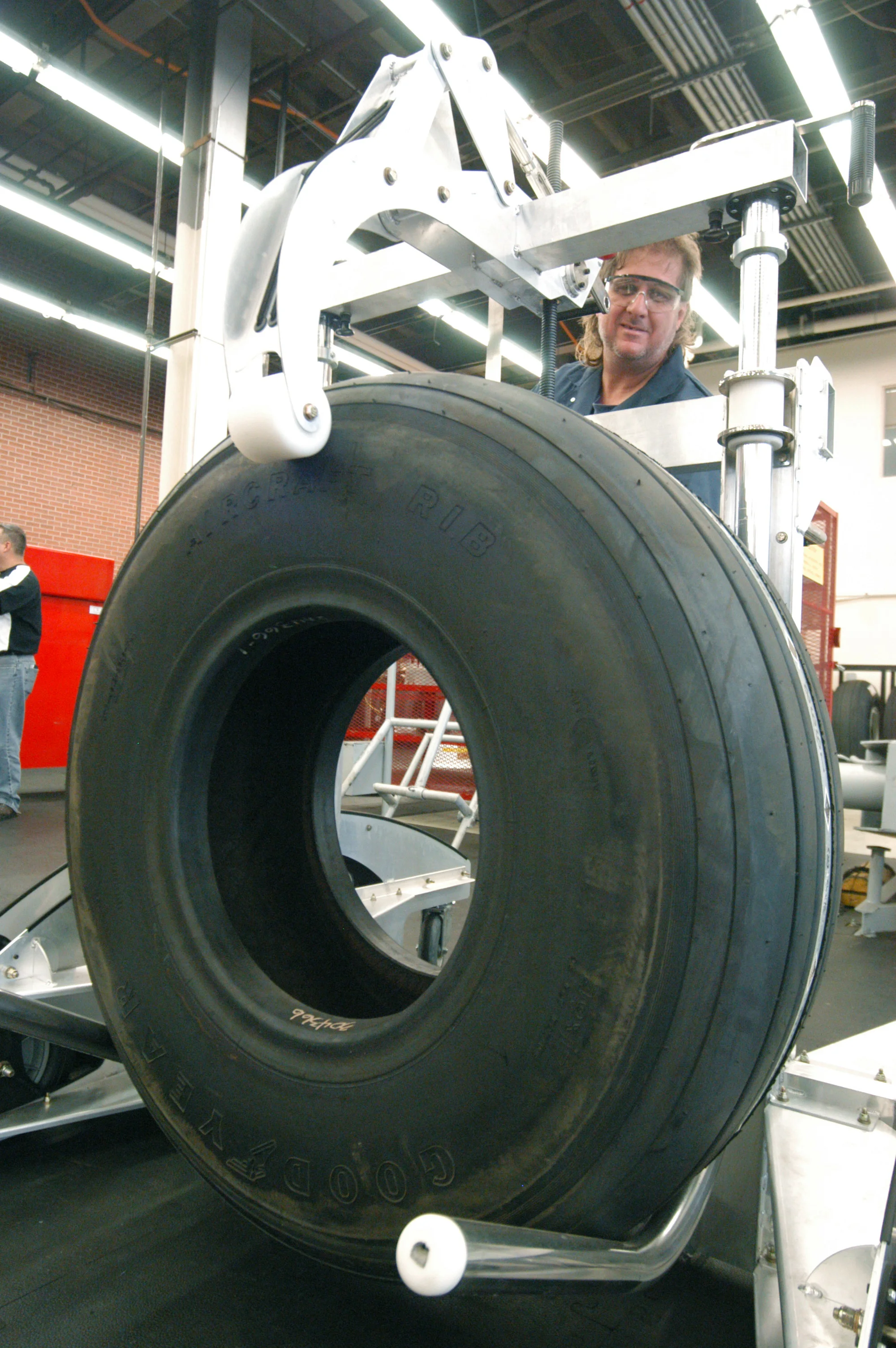
Additionally, AI assists with transit signal prioritization by coordinating with city traffic systems, reducing bus idling at red lights, shortening trip times, and saving fuel. For further insights, visit Urban Institute.
AI analytics also aid agencies in understanding demand patterns and congestion, which leads to improved scheduling and route planning. More information can be found at Security Magazine.
AI-Driven Innovations in Ride-Sharing and Micro-Mobility
AI is enhancing the efficiency and user experience of ride-sharing and micro-mobility services. By identifying gaps in public transport networks, AI and data analytics assist agencies in improving access and reducing reliance on private cars. For more, check out Phoenix Bizz.
AI-powered apps offer passengers increased convenience and safety with features like real-time updates, digital tickets, and AI chatbots. Discover more at Phoenix Bizz.
AI-enabled cameras and sensors monitor passenger flow and congestion, allowing agencies to allocate resources efficiently and adjust schedules dynamically.
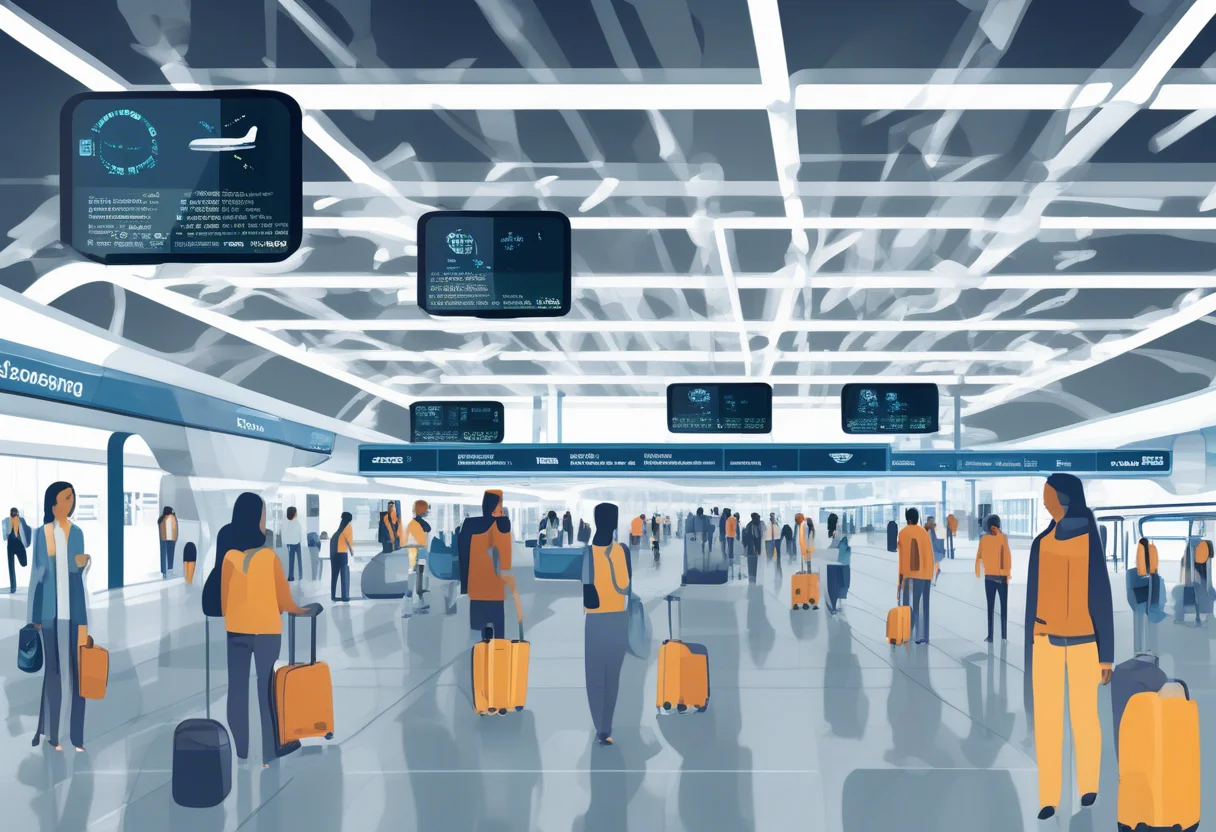
See Security Magazine for additional details.
AI also enhances paratransit services by enabling same-day ride bookings, a significant benefit for individuals with special mobility needs. For more information, refer to Federal Transit Administration.
In mid-sized cities, integrating AI with ride-sharing and micro-mobility solutions is part of a broader initiative to reduce energy consumption and increase public transit usage. For further reading, visit Vanderbilt University.
AI Technologies for Sustainable Urban Development
AI in Carbon Neutrality and Emission Reduction
AI is a key player in cutting down carbon emissions and pushing cities towards carbon neutrality. With AI, energy use can be fine-tuned to cut down waste and pollution. For example, AI-powered smart grids can blend renewable energy sources and streamline energy distribution. This helps keep pollution in check.
Moreover, AI-driven traffic systems use real-time data to smooth out traffic flow, easing congestion and cutting emissions. In Singapore, for instance, AI has helped trim citywide emissions by 15%, even though more people are using public transport.
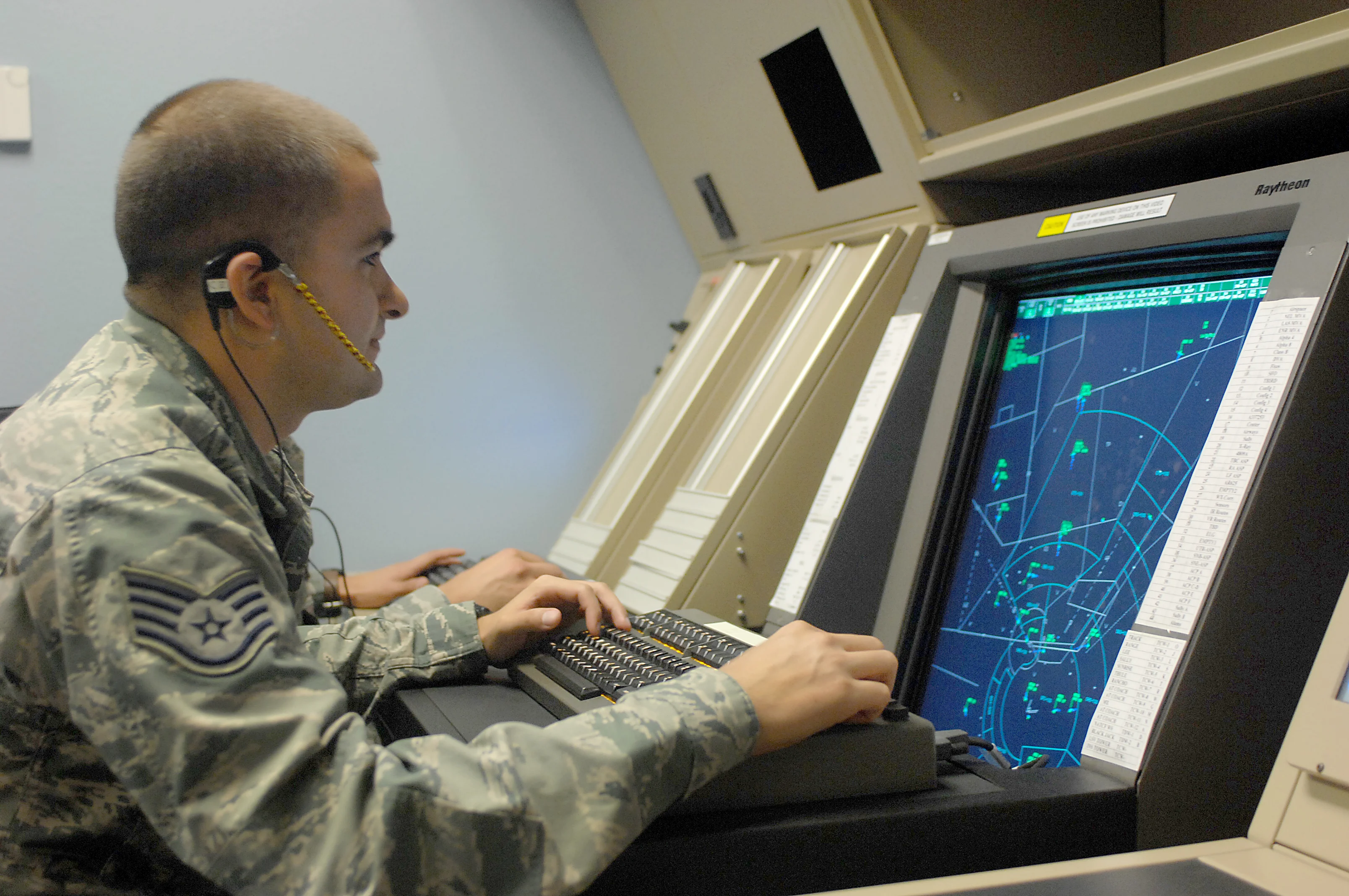
AI also plays a significant role in maintaining public transport and infrastructure efficiently. It predicts maintenance needs, resulting in less downtime and lower costs, all while supporting sustainability goals. Businesses using AI in city planning can optimize resource usage, reducing waste and inefficiencies. An AI-controlled smart grid, for example, can foresee maintenance issues before they become problems, ensuring energy keeps flowing efficiently and emissions stay low.
AI and Geospatial Data in Urban Planning
Combining geospatial data with AI is transforming urban planning. By using digital twins—virtual city replicas made with IoT data—AI can test out different city planning ideas before they go live. This approach allows planners to determine the best strategies for managing traffic or energy use without causing real-life disruptions.
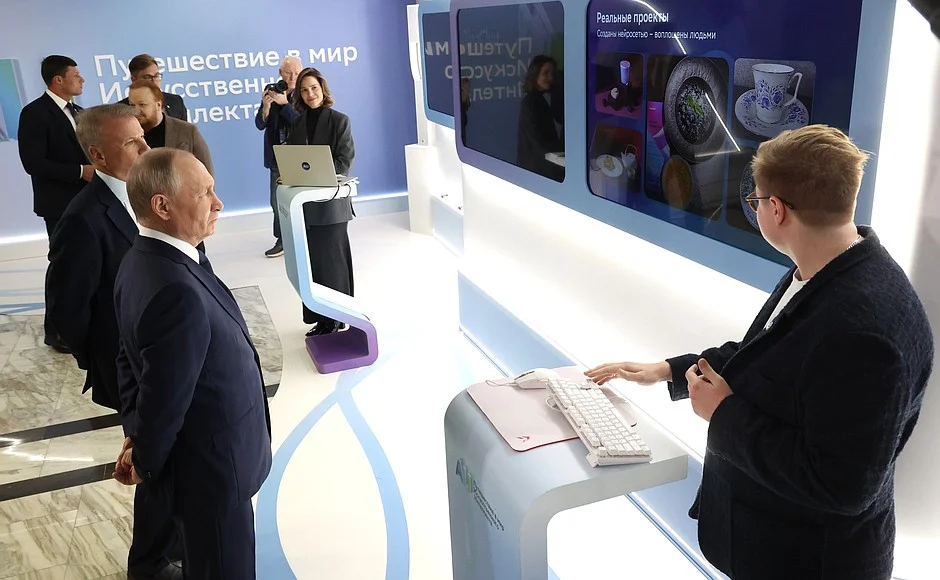
Tools like Modeling Urban Growth (MUG) utilize satellite images and demographic data to predict urban growth. This aids planners in deciding where to focus on electrification and energy services, especially in developing areas.
AI and geospatial data also maximize the use of limited space in crowded cities, enhancing both accessibility and sustainability. By leveraging AI insights, cities can better manage resources, boosting resilience and safety while aligning with the UN Sustainable Development Goals.
Future Trends and Emerging AI Technologies in Urban Mobility
AI-Driven Autonomous Vehicle Fleets
Autonomous vehicle fleets are set to transform urban mobility, promising increased efficiency and reduced emissions. As AI technology advances in managing real-time traffic, these fleets will become a familiar sight in cities. Leading the charge are companies like Waymo and Cruise. For instance, Waymo is actively rolling out its fully autonomous robotaxi services in Dallas with support from Avis Budget Group.
What began as pilot projects are now evolving into real-world applications, adept at managing logistics and navigating busy streets. The autonomous vehicle market is anticipated to experience significant growth, with the AI in mobility sector projected to expand from USD 13.23 billion in 2025 to approximately USD 424.62 billion by 2034, marking a growth rate of 47.3% (Cervicorn Consulting).
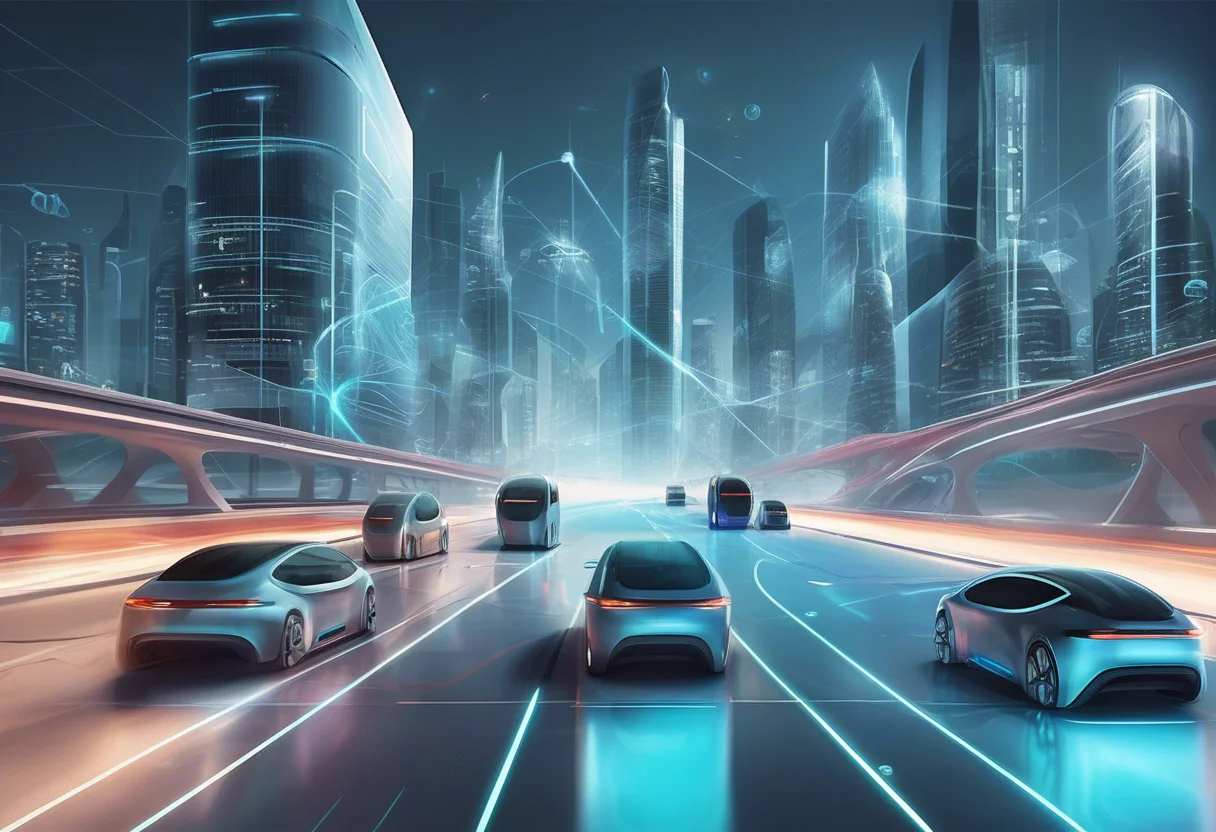
AI Integration with Smart Infrastructure
AI and smart infrastructure are joining forces to address urban mobility challenges, such as traffic congestion and pollution. Smart traffic systems, like those in Pittsburgh, leverage real-time data and IoT to dynamically adjust traffic lights, enhancing traffic flow and reducing emissions (Lytx Blog).
Emerging technologies, including digital twins and decentralized energy systems, are contributing to smarter cities with enhanced resource management. AI is also enhancing public transit, paving the way for more sustainable urban travel (Keolis North America Blog).
Cities like Singapore and Barcelona are at the forefront of smart infrastructure development. Singapore's Smart Nation initiative harnesses data and connectivity to enhance urban living, while Barcelona employs IoT devices for efficient resource management. Companies such as Siemens and Cisco are developing platforms like Siemens' Intelligent Traffic Systems and Cisco's Connected Roadways to facilitate the integration of autonomous vehicles with city infrastructure. This collaboration is crucial to ensuring that autonomous fleets operate smoothly and safely within urban environments.
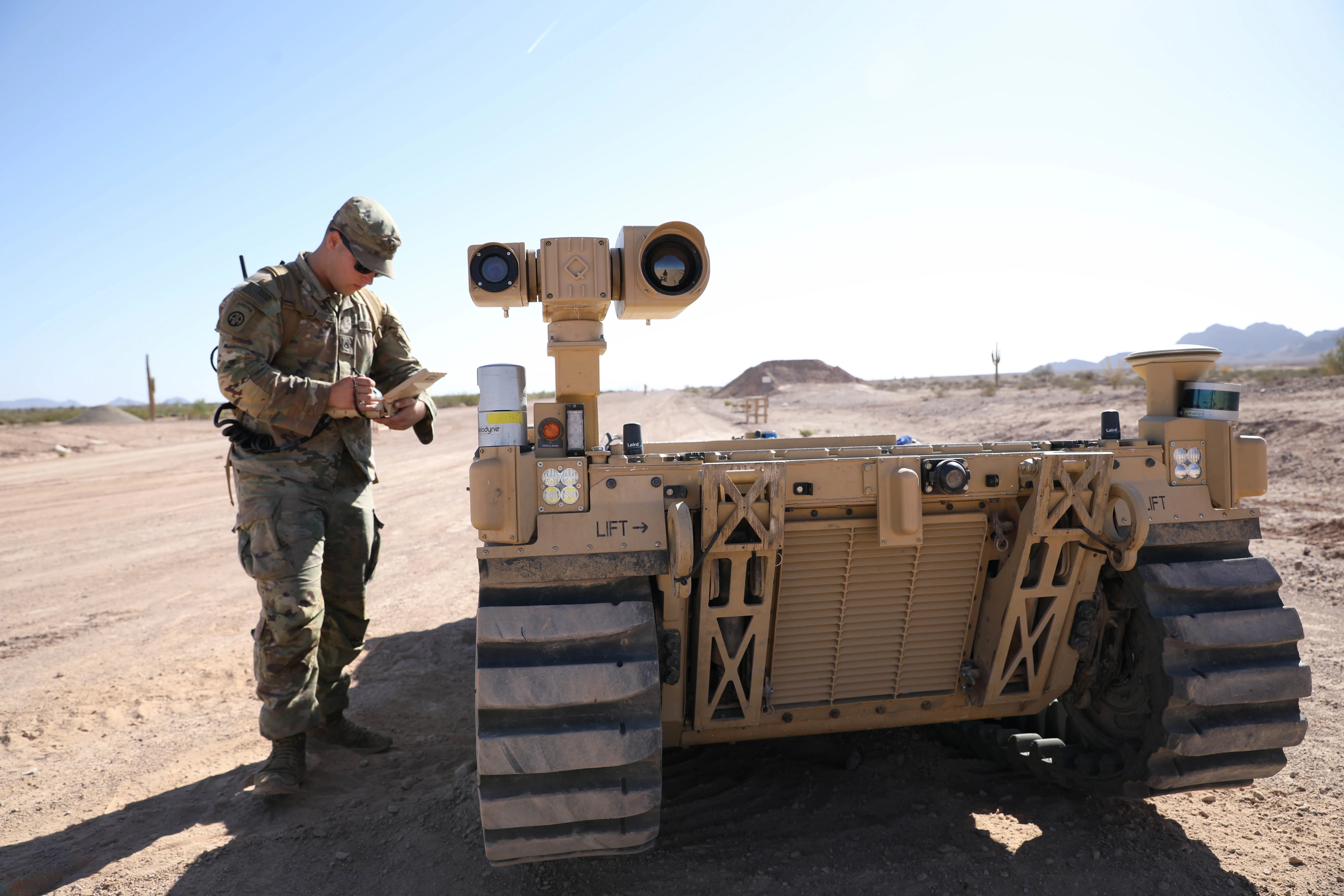
FAQ Section
How AI Technologies Are Transforming Traffic Management in U.S. Cities
AI is revolutionizing how traffic is managed in U.S. cities, making urban travel smoother and smarter with data-driven solutions. Regulatory sandboxes and AI Centers of Excellence are emerging nationwide, allowing cities to experiment with innovative traffic management ideas. Federal support plays a crucial role in integrating AI into key areas like city infrastructure and traffic systems.
For instance, the Department of Energy and National Labs are providing high-tech computing and AI tools to enhance city traffic flow. Cities such as Pittsburgh and Los Angeles are testing AI-powered traffic lights that adapt in real-time based on traffic conditions, leading to reduced congestion and lower emissions as the lights adjust using data from sensors and cameras.

Key Benefits of AI Technologies in Urban Mobility
AI offers significant benefits for urban mobility, including improved traffic flow, reduced emissions, and enhanced safety. Through predictive analytics and real-time adjustments, AI alleviates traffic jams and shortens travel times, boosting economic efficiency and urban safety. While public sentiment on AI varies, experts highlight its potential to significantly enhance daily life, particularly in transportation.
AI also optimizes ride-sharing and public transit routes, reducing emissions and simplifying navigation. It provides personalized travel recommendations and real-time transit updates, enabling commuters to plan more effectively and minimize waiting times. By leveraging AI, cities can manage transport networks more efficiently and sustainably.
Enhancing Public Transit Efficiency with AI Technologies
AI is transforming public transit by enhancing operational smoothness and reliability. By analyzing large datasets, AI helps transit systems refine schedules, routes, and resource allocation for improved service. Federal programs are promoting AI adoption in transportation, accelerating its integration and boosting system efficiency.
The Department of Energy is developing advanced algorithms for transit management and predictive maintenance. Some U.S. cities are utilizing these AI tools to minimize downtime for buses and trains, ensuring more reliable service. AI also facilitates flexible scheduling and route planning, adapting to passenger needs and other variables.
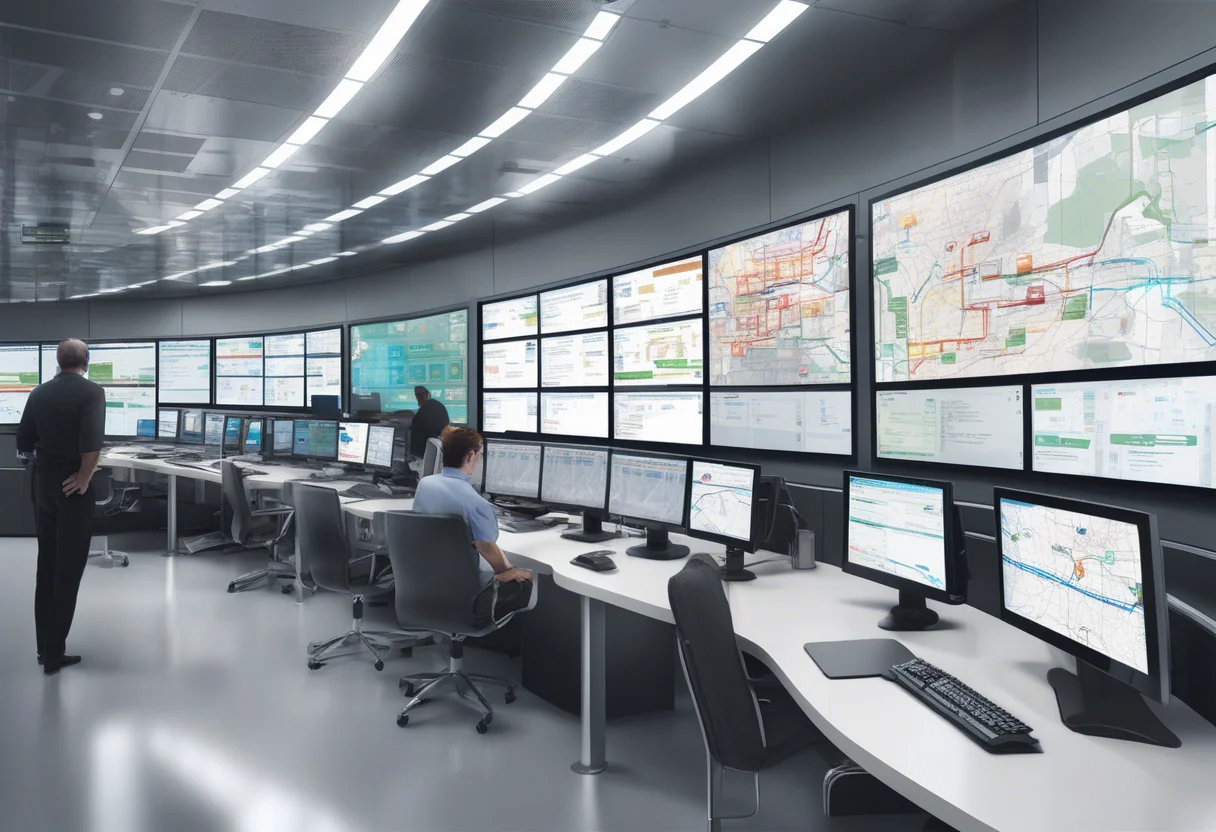
Moreover, AI-powered chatbots and virtual assistants provide passengers with real-time information, such as schedule changes, enhancing communication and satisfaction. Thanks to these advancements, AI is making public transit more efficient, reliable, and user-friendly.
For a comprehensive overview of federal support for AI in urban mobility, refer to America's AI Action Plan. The Department of Energy offers insights into AI's role in improving city traffic and transit systems. For further information on AI's impact on urban transport, visit the Trump White House Archives.